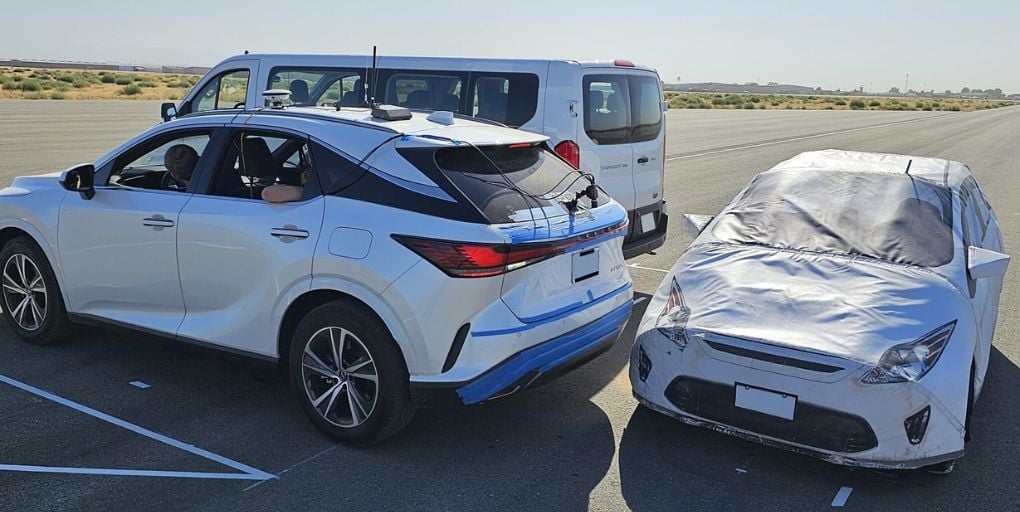The American Automobile Association (AAA) is sharing details of its latest research into how well Automatic Emergency Braking Systems work and says they aren't always "foolproof."
Vehicles
AAA says its recent research examined various simulated collisions across four popular 2023 model-year vehicles equipped with reverse automatic emergency braking (AEB) with rear cross traffic mitigation. AAA says all four test vehicles were small to medium SUVs due to the popularity of these categories. Here are the four vehicles tested:
- 2023 Hyundai Tucson Hybrid Limited AWD
- 2023 Lexus RX 350 Premium
- 2023 Mazda CX-30 2.5 Turbo AWD Premium Plus Package
- 2023 Volkswagen Tiguan 2.0T SEL R-Line
The Inquiry
AAA says reverse automatic emergency braking (AEB) systems have been shown to significantly reduce rear-end collisions. Reverse AEB with rear cross traffic mitigation systems are designed to mitigate or prevent collisions with other vehicles, with some reverse AEB systems detecting rear cross-traffic and automatically applying brakes in response to other cars, pedestrians, cyclists or stationary objects. In its testing, AAA says its engineers wanted to know how reverse AEB systems perform in two scenarios:
- When backing out of a parking space into the path of an oncoming vehicle with an adjacent parked vehicle blocking the view
- While encountering a stationary child pedestrian behind the vehicle.
.gif?width=960&height=540&name=GMP_U2F2ZUdIMDE-3%20(1).gif)
The Results
Here's what AAA says its research found:
1) Reverse AEB systems automatically applied brakes in 65% of test runs and prevented a collision in 2.5% of test runs in the context of the backing-up scenarios involving a subject vehicle crossing behind the test vehicle.
2) With the stationary child target behind the test vehicle, reverse (AEB) automatically applied brakes in 75% of test runs and prevented a collision in 50% of test runs.
“Drivers should not solely rely on these advanced driving systems to prevent collisions, but instead use them to enhance their awareness of their surroundings and support safe driving,” said Greg Brannon, AAA’s director of automotive engineering. “Above all, vehicle testing requirements for these systems should be updated to be consistent, taking into consideration unusual objects and more realistic scenarios with the goal of achieving the greatest safety benefit to drivers, pedestrians and cyclists,” said Brannon.
AAA Tips
In light of its findings, AAA is sharing three tips for drivers when it comes to AEB systems.
- AAA says drivers should not rely on reverse AEB systems to prevent collisions when backing up but utilize backup cameras and other sensors to enhance their awareness.
- It also advises drivers to back up cautiously when an object obstructs the view, allowing the ADAS sensors to “see” or detect cross traffic, giving the system more time to see a potential collision and to bring the vehicle to a stop.
- It’s important to make sure these systems are working properly and repaired accurately. Check out AAA' article about the repair costs of ADAS systems here: Fixing Advanced Vehicle Systems Makes Up Over One-Third of Repair Costs Following a Crash.
Advice for the Industry
AAA says AEB testing standards are lacking in the U.S. but are crucial to ensure the systems work properly in real-world scenarios. Researcher say it's important to evaluate not only how well they function but also their ability to address different situations that may arise. AAA says taking a balanced approach to testing can help ensure that these systems are safe and effective for all users.
To read more about the research and full testing methodology visit AAA's website here.
Photo Credit: AAA.

